John D. Loudermilk, Nashville legend, born in West Durham
by John Schelp
Durham's John D. Loudermilk wrote several hit songs including: 'Tobacco Road' (Lou Rawls), 'A Rose And A Baby Ruth' (George Hamilton), and 'Turn me On' (Nora Jones).The Country Music Hall of Fame and Grammy-award winning composer was born in 1934 "on a kitchen table" at 8th and C streets in West Durham. Today, that corner is better known as Iredell and West Knox (behind Dayspring Fellowship and Magnolia Grill in Old West Durham).
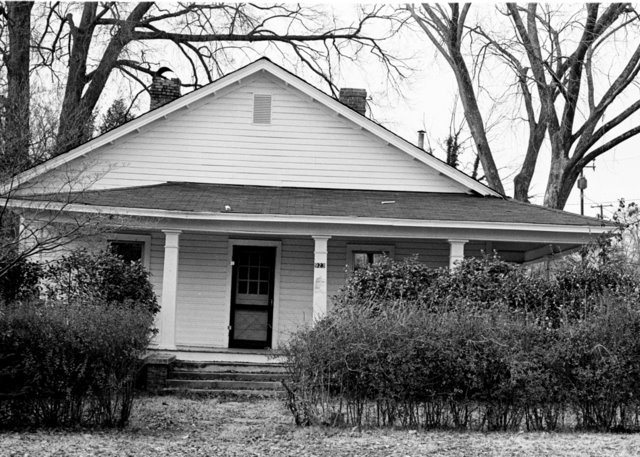
The Loudermilk family lived in several houses in Durham. As a youngster, Loudermilk lived on Dezern Place, near Erwin Mill No. 4 in West Durham (the house still stands today, near Hale and Hillsborough).
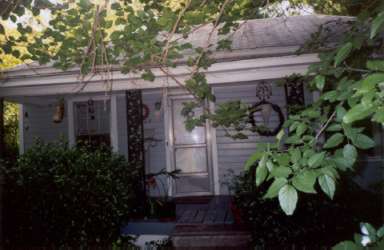
Loudermilk's mother, Pauline, gave piano lessons near Wallace's Auto Electric Garage on Hillsborough Road. (One of her students was Peaches Riggsbee, Carl Wallace's daughter.)
In a 2003 interview with OWDNA, Loudermilk said Ernest Moon was his first musical influence. Moon and his wife (who worked at Erwin Mills) lived a couple of blocks north of East Campus. The young Loudermilk was delivering telegrams in West Durham and heard Moon playing a classical gut guitar on his porch. Loudermilk was hooked.
Loudermilk's parents worshipped at West Durham Wesleyan Church (ca. 1915) at 922 Ninth Street.
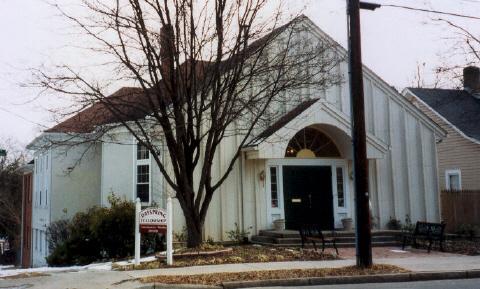
Loudermilk's parents are buried at Maplewood Cemetery.
John D. Loudermilk, born around 1884, died on 20 Sept 1960 at approx 76.
Pauline Ledford Loudermilk, born in 1893, died on 30 Sept 1965, at 72.
The Loudermilk name is more common in the Salisbury area where many Rhinelanders settled. The so-called "Carolina Dutch" had come down the Great Wagon Road from Philadelphia.
****
Other Durham neighborhoods
Loudermilk called Few Gardens, in East Durham, the first nice place he lived. In the early days, Few Gardens was built for Whites only. McDougall Terrace was built for Blacks only.
When living on South Duke Street (near Richard Morgan's childhood home), Loudermilk's mother sent him to the A&P near Duke Memorial Church. She'd send him early in the morning to hide hard-to-find soap behind the Corn Flakes so his parents would find them later. (This A&P store later served as the Trailways/Greyhound bus station, before the bus lines moved to the new Durham Station.)
As a kid, Loudermilk had early musical training in the Salvation Army Band, where he learned to play trumpet, flugel horn, saxophone, trombone and bass drum.
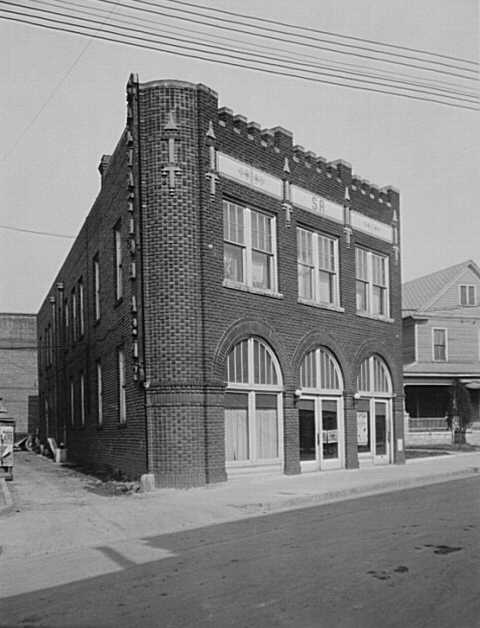
(courtesy of Endangered Durham)
Loudermilk said Carden's Dance Hall was the first place he performed on stage. He called the place out near Highway 70 and 751, 'a rough place.' It's still standing, behind Libby's Too.
****
Tobacco Road
Loudermilk is perhaps best known as the composer of "Tobacco Road" -- a stark, stomping tale of hard-bitten Southern poverty with a strong blues flavor sung by Lou Rawls, Jefferson Airplane, Edgar Winter, and others.
In his 2003 interview, Loudermilk talked about delivering telegrams to Marvin's Alley in East Durham. This little lane was just east of the Angier/Alston intersection. (Since the mills owned the houses and the street, local police did not patrol the area. The strip became home to liquor houses, gambling houses, and houses of ill-repute.)
Loudermilk said he delivered telegrams and money orders here, and all the homes had their shades drawn.
In the interview, Loudermilk said Marvin's Alley was the inspiration for his hit song, 'Tobacco Road.'

****
Tobacco Road
by John D. Loudermilk
I was born in a dump
Mama died and daddy got drunk
Left me here to die or grow
In the middle of Tobacco Road
Grew up in a rusty shack
All I owned was a-hangin' on my back
Only Lord knows how I loathe
This place called Tobacco Road
But it's home
The only life I've ever knowed
But the Lord knows I loathe
Tobacco Road
Gonna leave, get a job
With the help and the grace of God
Save my money, get rich, I know
Bring it back to Tobacco Road
Bring a dynamite and a crane
Blow it up and start all over again
Build a town, be proud to show
Keep the name "Tobacco Road"
'Cause it's home
The only life I've ever knowed
I despite you, 'cause you're filthy
But I love you, 'cause you're home
Tobacco Road
'Tobacco Road' was far from Loudermilk's only success. In the late 1950s and early 1960s, he supplied material for country stars, teen idols, and rock singers, including "Waterloo" (Stonewall Jackson), "Angela Jones" (Johnny Ferguson), "Ebony Eyes" (Everly Brothers), "Norman" (Sue Thompson), "Abilene" (George Hamilton IV), "What Made Milwaukee Famous Has Made a Loser Out of Me" (Loudermilk), and "This Little Bird" (Marianne Faithfull's moody British hit).
****
Walgreen Drugs is inspiration for 'Rose and a Baby Ruth'
In his 2003 interview, Loudermilk said he had a girlfriend in West Durham, a girlfriend downtown and a girlfriend in East Durham.
When visiting his girlfriend in East Durham, he often stopped at Walgreen Drugs to pick up a candy bar. The store was a sale on flowers so, he bought her a rose and a Baby Ruth.
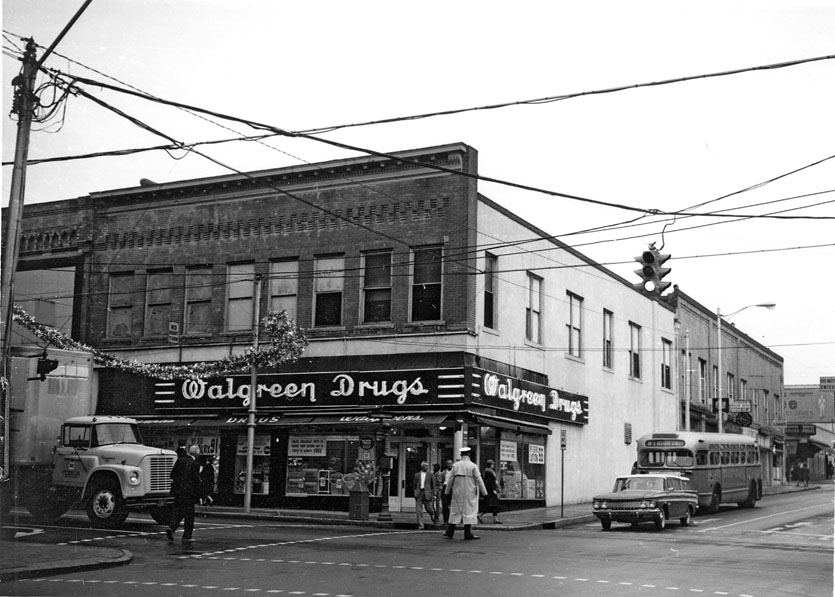
George Hamilton IV recorded Loudermilk's song, "A Rose And A Baby Ruth," in Chapel Hill. When radio stations started playing it, lawyers from the Baby Ruth Company sent Loudermilk and Hamilton a letter ordering them to immediately cease and desist performing the song. Shortly thereafter, as Baby Ruth sales jumped, a second letter arrived, saying it was OK to continue.
According to the BBC, Hamilton wasn't too happy with, "A Rose and A Baby Ruth" at first -- calling it a somewhat sappy teen ballad. He relented however and the single (first recorded on Colonial and then picked up by ABC-Paramont) shot into the American pop charts and went on to sell more than a million copies.
The Colonial label was owned by Orvil Campbell in Chapel Hill. (He also owned Colonial Press and the Chapel Hill Weekly.) Colonial's big hit was a comedy single called "What It Was Was Football" by an unknown actor named Andy Griffith. It was an enormous success and Capitol Records bought the rights.
Griffith once performed "What It Was Was Football" at an employee Christmas party at West Durham Fidelity Bank at Ninth & Perry. Today, the old bank is a bagel shop.
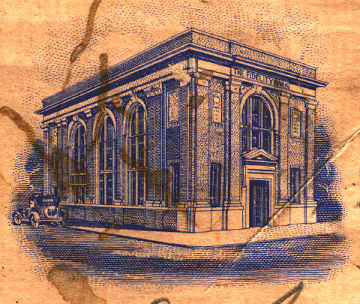
The mother of composer Don Schlitz grew up in a mill house across Ninth Street from Fidelity Bank. Loudermilk said Schlitz was born near his house and that he knew him back in his Durham days. Schlitz went on to write, 'The Gambler.' Made famous by Kenny Rogers, the song is considered one of the top-25 best Western songs of all time.
Finally, according to the Herald-Sun, while at Duke Rice Diet, Elvis Presley lived incognito in a caboose at the old Erwin Mills site on Ninth Street.
So, Old West Durham can claim three residents who've played important roles in three genres of American music: Country (Loudermilk), Western (Schlitz) and Rock & Roll (Presley).
****
I remember when I was in the 9th grade John was in a talent show and played the guitar and sang Cool Water. He was the hit of the show and his singing was beautiful. I knew then he was going to be a hit musician. My brother Douglas was a friend of his in school... I believe his mother played the guitar and sang also.
--Tommy Hunt
****
Marvin's Alley & East Durham
Today, much of Marvin's Alley is owned by Artis Plummer -- who describes himself as a 'Black Cherokee' who played for the Cleveland Buckeyes in the Negro League. Plummer was born around 1927 old and has stories to tell.
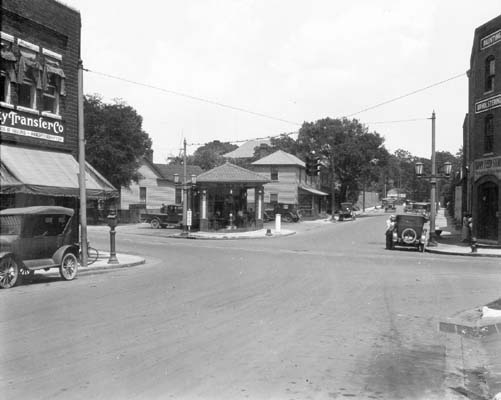
He said Marvin's Alley was one of Durham's early White slums. Eight houses lined the south side of the street (sharing one water meter) and five houses lined the north side (sharing another water meter).

Today the one-block dead end is called Morven's Place. Past the dead end was the Gulf Oil depot. Just south this street was an old hosiery mill (now standing empty on Holman Street). The mills owned Marvin's Alley and its houses.
Since, Marvin's Alley was private property, the police would not drive down the street. So, every place on the block was a gambling house, liquor house or a house of ill-repute.
Plummer played for the Durham Eagles, Cincinnati Crescent, Cleveland Buckeyes and the Atlanta Black Crackers. He noted that Major League baseball was integrated because the Negro League was beginning to outsell the White leagues. He mentioned a game between New York and San Francisco in NYC that brought in 25,000 fans. The next day, the NY Black Yankees played his team at the same field -- in front of 35,000 fans.
****
Lou Rawls & Tobacco Road
When performing live, Lou Rawls prefaced some of his songs with lengthy monologues that led into the song. Rawls said his onstage stories grew out of necessity. These monologues were later credited as a precursor to what is now known as rap music. (source: LA Times, 01/07/06)
"I started talking because it was the only way to get people's
attention. For years I played nightclubs, working the "chitlin' circuit." These clubs were very small, very tight, very crowded and very loud. Everything was loud but the entertainment. The only way to establish communication was by telling a story to lead into the song. That would catch people's attention." --Lou Rawls
An early example is when Rawls started delivering monologues about life and love in the song, "Tobacco Road" around 1967 ... "when it's around 10 above and it's about 12 inches of snow outside, and the hawk -- I'm speakin' of the almighty hawk, Mr. Wind -- when he blows down the street around 35, 40 miles an hour, it's just like a giant razorblade blowin' down the street, and all the clothes in the world can't help you."
